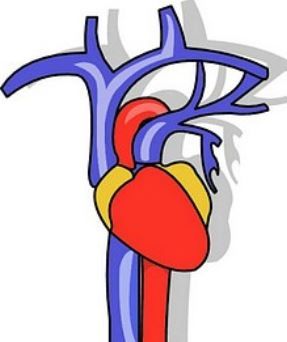Article
Cardiac Findings Highlight Epilepsy Conference
Author(s):
New research sheds light on epilepsy concerns, particularly the link between cardiac abnormalities and sudden unexpected death.
Cardiac abnormalities are linked with sudden unexpected death in epilepsy.

Abnormalities in cardiac repolarization may dangerously slow the heart rate and induce asystole during the post-seizure state and significantly raise the risk of sudden unexpected death in epilepsy (SUDEP), researchers at the University of Florida College of Medicine found.
Their findings and others that describe the link between cardiac abnormalities and SUDEP were presented at the American Epilepsy Society’s (AES) 68th Annual Meeting held December 5-9 in Seattle.
The other reported findings about SUDEP and cardiac mechanisms include the following:
• Increased sodium current (INa) density may underlie cardiac arrhythmia in patients with Dravet syndrome, potentially triggering SUDEP.
• In freely moving rats with an experimentally induced temporal lobe epilepsy, seizures were accompanied by dramatic changes in heart activity, including abnormal heart rhythms, dramatically decreased heart rate, and asystole, followed by high heart rates that persisted after seizure activity had subsided.
Sudden death is more than 20 times more common in patients with epilepsy than in the general population, it was noted.
New research presented at the AES meeting explored the disabilities associated with childhood epilepsy and their effect on development. Studies included the following:
• The degree of intellectual disability in children with epilepsy predicts seizure outcome. Mild intellectual disability was associated with a substantially better prognosis for remission and absence of intractability than moderate or severe/profound ID. Focal epilepsy and mild intellectual disability had the same rate of remission and intractability as focal epilepsy with normal intelligence.
• In a study of the relationship between behavioral/psychiatric disorders and childhood epilepsy, children with epilepsy across the board had worse behavioral problem scores and a lower social competency score than controls. After excluding complicated cases and those who were not seizure-free and off medication, researchers found a persistent difference between children with epilepsy and controls on parental reports of behavioral problems.
• Children in another study who had recent-onset epilepsy had higher rates of psychological disorders at baseline and 2-year follow-up than those who did not. At baseline, children with epilepsy were more likely to have depression, anxiety, and ADHD.
Researchers described the following models for predicting seizure occurrence in critically ill children:
• One study examined potential risk factors for early post-traumatic seizures in children with acute traumatic brain injury. Researchers used the findings to create a model for predicting seizures, including subclinical seizures and status epilepticus, in critically ill children. Patients were placed on continuous EEG monitoring. The leading risk factors for subclinical seizures were young age and intradural bleeding.
• A second study presented a seizure prediction model for use among critically ill children with multiple types of acute brain injury. The authors developed a model using a retrospective multicenter database of critically ill children who had acute encephalopathy and identified risk factors for seizure occurrence. Based on various predictor variables, clinicians could calculate a seizure prediction score. The findings suggest that a model developed from multicenter cEEG data can guide the use of EEG resources when applied at a single center, the authors said.
Studies presented at the AES meeting offered new insights into diverse patient experiences with CBD cannabis and its derivative cannabidiol (CBD):
• Physicians and researchers in Colorado conducted a retrospective review of children and adolescents with catastrophic forms of epilepsy who were receiving artisanal oral cannabis extracts. Parents reported a seizure reduction of 50% or more in only one-third of patients, and this did not correlate with an improvement in their EEGs. Adverse effects occurred in 47% of patients; they included increased seizures or new seizures, somnolence/fatigue, and developmental regression.
•In a survey of parents whose children had infantile spasms or Lennox Gastaut syndrome or both and were treated with artisanal CBD-enriched cannabis preparations, 92% of parents reported a reduction in seizures and 13% reported complete seizure-freedom. The parents reported that before starting CBD, their children typically had tried 8 medications without success.
• A 4-year-old child with Doose syndrome whose family initiated independent CBD treatment had had at least 10 seizures per day while awake and asleep. Immediately after starting CBD, the child continued to have seizures and valproic acid levels increased substantially. When the dosage of valproic acid was reduced, the blood level returned to the previous range, and over 4 months seizures disappeared clinically and a repeat EEG was normal in both awake and asleep periods.
Findings from a phase 3 clinical trial reported at the meeting suggested a potential new anti-epileptic drug:
• In a study of brivaracetam, an analog of levetiracetam, in adults with poorly controlled partial onset seizures, data from patients’ seizure diaries showed a clinically relevant reduction in the frequency of partial onset seizures during a 28-day period in patients taking brivaracetam compared with placebo. The study showed that brivaracetam daily doses of 100 mg and 200 mg are generally well tolerated and may help reduce seizure frequency used as adjunctive therapy in adult patients with epilepsy who have partial onset seizures, the authors stated.




